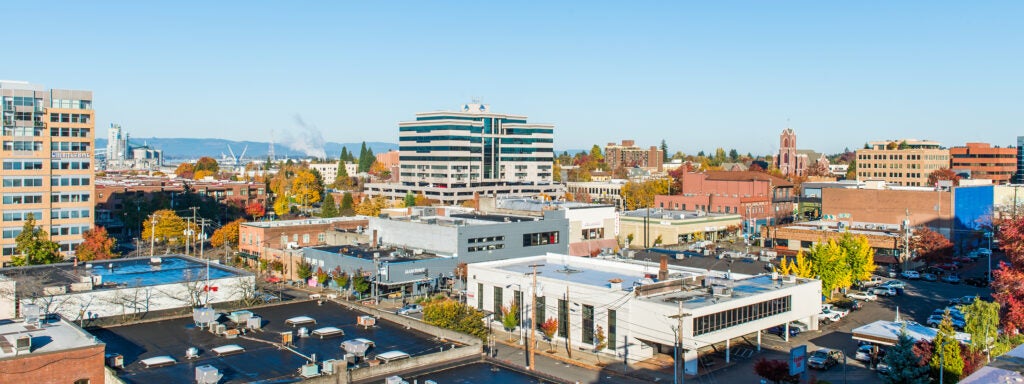Earthquakes: Are you prepared?
The Pacific Northwest is seismically active, with hundreds of earthquakes occurring every year. Most of these earthquakes are so small they can only be detected by sensitive instruments. However, damaging earthquakes have occurred in this region during the past 130 years. You can reduce the risks of earthquakes by knowing what actions to take before, during and after a quake strikes.

Before an earthquake
Check for hazards in the home and office
- Make sure shelves are secure and designed with latching doors or raised edges to prevent objects from falling
- Top-heavy furniture and equipment must be bolted to walls or floor
- Store breakables and heavy objects on lower shelves
- Overhead lights, heavy artwork and mirrors need to be anchored
- Store flammable liquids in flammable liquids storage cabinets
Identify safe places indoors and outdoors
- Under sturdy furniture such as a heavy desk or table
- Against an inside wall
- Away from glass that could shatter or heavy bookcases or furniture that could fall over
Have disaster supplies on hand
Mitigation resources
Beat the quake
Do you know how to make your home a safe space during an earthquake? Take this quiz and find out (Skip entering your address to complete the quiz). The more you do before the earthquake shakes your space, the less damage you will have and the more points you will earn.
During an earthquake
If you are indoors:

- Stay indoors
- DROP, COVER and HOLD ON! Drop to the ground; take cover by getting under a sturdy table, bench or desk and hold on. If there isn’t a table or desk near you, cover your face and head with your arms and crouch down into a ball next to an interior wall. Move away from windows that may break and furniture or large objects that could fall over
- Be aware that the electricity may go out and fire alarms and sprinkler systems may activate
- If you are in bed stay there! Hold on and put a pillow over your head for protection.
- If you are in a theater or stadium, stay in your seat or get under it if possible, and protect your head with your arms. Do not try to leave until the shaking is over
- If you are in a crowded room or public place, do not rush for exits. Move away from display shelves holding objects that could fall on you and “drop, cover and hold”
- Do not use elevators
If you are outdoors:
- Stay outdoors!
- Move to an open area away from trees, buildings, utility poles and lines, or signs
- If you are in a downtown area, on a sidewalk near a tall building, get inside the building’s lobby to protect yourself from falling bricks, glass or other debris
- The greatest danger exists directly outside buildings at exits and alongside exterior walls
If you are driving:
- Pull to the side of the road as quickly as possible, but keep away from overhead hazards such as trees, buildings, utility poles and lines, signs, and bridges. Stay in the vehicle until the shaking stops
Recommended earthquake preparedness and safety actions
Key Earthquake Safety Tips for People with Disabilities or Access and Functional Needs
When the earthquake stops
- Count to 60 before getting up, giving displaced objects a chance to settle
- Check yourself and others around you for injuries
- Stay calm and move cautiously, checking for unstable objects, broken glass, and other hazards above and around you
- Expect aftershocks. Drop, Cover and Hold on every time you feel one
- Evaluate any structural damage and determine if you need to evacuate
- If the structure seems largely undamaged, stay where you are
- If there are noticeable cracks in the wall, windows are broken, or you can smell natural gas (rotten eggs), evacuate
- If you need to evacuate
- Take your emergency kit and go to a safe nearby location
- Watch for falling objects as you leave
- Check on your neighbors if you can safely do so
- Avoid using your phone for local calls during the first 30 minutes after the earthquake. Phone system overload may delay emergency responders
- Don’t call 911 to report an earthquake. Only call 911 for serious injuries
- Follow all directions from local authorities and responder personnel
- Turn on a battery-powered or vehicle radio for information

